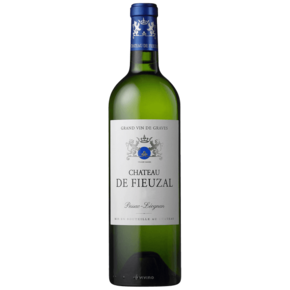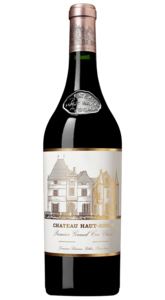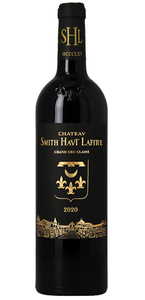Château de Fieuzal Blanc 2020
| Distrikt | Péssac-Léognan |
| Druvor | Sauvignon Blanc |
| Årgång | 2020 |
| Fyllighet | 5 |
| Fruktsyra | 9 |
| Sötma | 1 |
| Procucenter | Château de Fieuzal |
| Artikelnr | Fieuzal 503 |
| Lagerstatus | |
| Förpackningsmaterial | Trälåda OWC |
| Fraktkostnad | 169:- |
| Avnjutes mellan | 2022 - 2043 |
Här redovisar och presenterar vi kända vinskribenters utlåtande om specifika viner. Utöver dessa lägger vi in en egen kommentar när vi har provat samma vin.
VertdeVin
The nose is fruity and offers gourmandize, a certain richness (in finesse), elegance, deepness, a nice definition as well as a small aerial richness/ continued richness. It reveals notes of lemon, crushed vine peach, small notes of bright apple associated with touches of zests, quenette, small exotic fruits, hints of gunpowder, white flower as well as a discreet hint of lemon flower and an imperceptible hint of nearly saline/nearly salty fat/smoked. The mouth is fruity, elegant, chiseled all in control and offers a nice acidulous frame, gourmandize, roundness, a certain richness (in straightness/juiciness), precision, a stretched side, a nice finesse in its fat/richness, freshness, justness as well as a nice balance. An aerial character in the balances and matter. On the palate this wine expresses notes of lemon, zests, small notes of kumquat associated with touches of crunchy/acidulous vine peach, mandarin, iodized gravel as well as fine hints of white flower, a discreet hint of acacia, lemon flower and an imperceptible hint of toasted almond (in the background). Good length and persistence.
Robert Parker Wine Advocate
The 2020 Blanc from de Fieuzal is performing very well in bottle, exhibiting aromas of peach and nectarine mingled with hints of mint, pastry cream and citrus zest. Medium to full-bodied, satiny and incisive, it's a bright, elegantly fleshy wine that's a touch finer-boned than the glossier, more textural 2019. Bottled under Diam 30, this cuvée continues to prove itself as one of the more interesting dry whites produced in contemporary Bordeaux.
This 90-hecatre estate in Pessac-Léognan is undergoing a renaissance in the hands of winemaker Stephen Carrier and consultant Thomas Duclos. Readers who have tasted old wines from Fieuzal will know that there's potential here, but Carrier feels that the estate lost 20 years due to viticultural mistakes of the late 1980s—20 years he's determined to catch up. Today, replanting is at high density (9,000 vines per hectare versus 6,000 in the estate's older plantings), and the varietal balance has been adapted to the soils (some 60% of the vineyard, incidentally, is gravel, with more sandy-clay soils to the southwest). Today, that means around 35% Merlot, 35% Cabernet Sauvignon, 20% Cabernet Franc and 10% Petit Verdot. Organic farming has been pursued, but it had to be abandoned in 2018, as the necessary doses of copper to control mildew were becoming too high. Today, reds are fragrant and pure, with discreet tannins and lively fruit tones. Whites (less than 10% of the production) are making obvious progress too: less varietal and more textural, they're waxy and incisive, well worth seeking out. In short, de Fieuzal is an estate to watch.
Druvor
Sauvignon Blanc
Tasting note
'The 2020 Blanc from de Fieuzal is performing very well in bottle, exhibiting aromas of peach and nectarine mingled with hints of mint, pastry cream and citrus zest. Medium to full-bodied, satiny and incisive, it's a bright, elegantly fleshy wine that's a touch finer-boned than the glossier, more textural 2019. Bottled under Diam 30, this cuvée continues to prove itself as one of the more interesting dry whites produced in contemporary Bordeaux.'
This 90-hecatre estate in Pessac-Léognan is undergoing a renaissance in the hands of winemaker Stephen Carrier and consultant Thomas Duclos. Readers who have tasted old wines from Fieuzal will know that there's potential here, but Carrier feels that the estate lost 20 years due to viticultural mistakes of the late 1980s—20 years he's determined to catch up. Today, replanting is at high density (9,000 vines per hectare versus 6,000 in the estate's older plantings), and the varietal balance has been adapted to the soils (some 60% of the vineyard, incidentally, is gravel, with more sandy-clay soils to the southwest). Today, that means around 35% Merlot, 35% Cabernet Sauvignon, 20% Cabernet Franc and 10% Petit Verdot. Organic farming has been pursued, but it had to be abandoned in 2018, as the necessary doses of copper to control mildew were becoming too high. Today, reds are fragrant and pure, with discreet tannins and lively fruit tones. Whites (less than 10% of the production) are making obvious progress too: less varietal and more textural, they're waxy and incisive, well worth seeking out. In short, de Fieuzal is an estate to watch.
Robert Parker Wine Advocate




